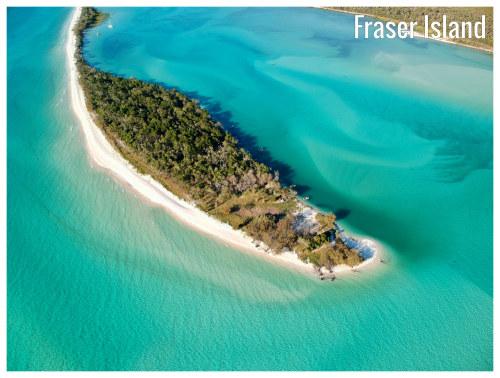
January
Weather in January
Temperature
With average high and low temperatures of 29.4°C (84.9°F) and 22.3°C (72.1°F) respectively, January is Fraser Island's warmest month.Rainfall
In January, the rain falls for 13.5 days. Throughout January, 163mm (6.42") of precipitation is accumulated. In Fraser Island, during the entire year, the rain falls for 143 days and collects up to 1271mm (50.04") of precipitation.Sea temperature
The months with the warmest seawater are January and February, with an average sea temperature of 27°C (80.6°F).Note: Water temperature between 25°C (77°F) and 29°C (84.2°F) provides warmth and pleasure, making water activities enjoyable for lengthened periods without feeling uncomfortable.
Daylight
The average length of the day in January is 13h and 31min.On the first day of the month, sunrise is at 4:59 am and sunset at 6:41 pm. On the last day of January, sunrise is at 5:22 am and sunset at 6:39 pm AEST.
Sunshine
In January, the average sunshine is 8h.UV index
January, February, November and December, with an average maximum UV index of 12, are months with the highest UV index. A UV Index value of 11, and more, symbolizes an extreme health hazard from unsafe exposure to UV radiation for ordinary individuals.Note: In January, the maximum UV index of 12 translates into these guidelines:
Practice all-important precautions. Light skin people may get burned in less than 5 minutes. UV radiation from the Sun is most intense between 10 a.m. and 4 p.m. Try to avoid direct sunlight during this period. Fend off the sun's harsh rays with appropriate clothing, a wide-brim hat, and UV-protective sunglasses. Despite the clouds, sunscreen with an SPF of at least 30 should be used liberally and reapplied frequently, especially after a swim or outdoor workout. Stay vigilant! UV rays get a boost in intensity due to sand and water reflections.
Published by: Weather Atlas | About Us
Data Sources | Weather Forecasting & Climate
Frequently asked questions
What part of the year is the hottest?
How hot is it in January?
How much does it rain in January?
When is the sea warmest?
What is the water temperature in January?
How many hours of daylight does Fraser Island have in January?
What time are sunrise and sunset in January?
How many hours of sunshine does Fraser Island have in January?
What are the months with the highest UV index?
How high is the UV index in January?
Average temperature in January
Fraser Island, Australia
- Average high temperature in January: 29.4°C
The warmest month (with the highest average high temperature) is January (29.4°C).
The month with the lowest average high temperature is July (21.1°C).
- Average low temperature in January: 22.3°C
The month with the highest average low temperature is February (22.4°C).
The coldest month (with the lowest average low temperature) is July (14.3°C).
Average rainfall in January
Fraser Island, Australia
- Average rainfall in January: 162.9mm
The wettest month (with the highest rainfall) is February (169mm).
The driest month (with the least rainfall) is September (51mm).
Average rainfall days in January
Fraser Island, Australia
- Average rainfall days in January: 13.5 days
The month with the highest number of rainy days is March (16.4 days).
The month with the least rainy days is September (7.7 days).
Average sea temperature in January
Fraser Island, Australia
- Average sea temperature in January: 27°C
The best months for swimming (with the highest average sea temperature) are January and February (27°C).
The coldest months (with the lowest average sea temperature) are July, August and September (22°C).
Average daylight in January /
Average sunshine in January
Fraser Island, Australia
- Average daylight in January: 13h and 3min
The month with the longest days is December (Average daylight: 13h and 42min).
The month with the shortest days is June (Average daylight: 10h and 36min).
- Average sunshine in January: 8h
The months with the most sunshine are September, October, November and December (Average sunshine: 9h).
The months with the least sunshine are February, March, April, May and June (Average sunshine: 7h).
Average UV index in January
Fraser Island, Australia
- Average UV index in January: 12
The months with the highest UV index are January, February, November and December (UV index 12).
The month with the lowest UV index is June (UV index 4).


